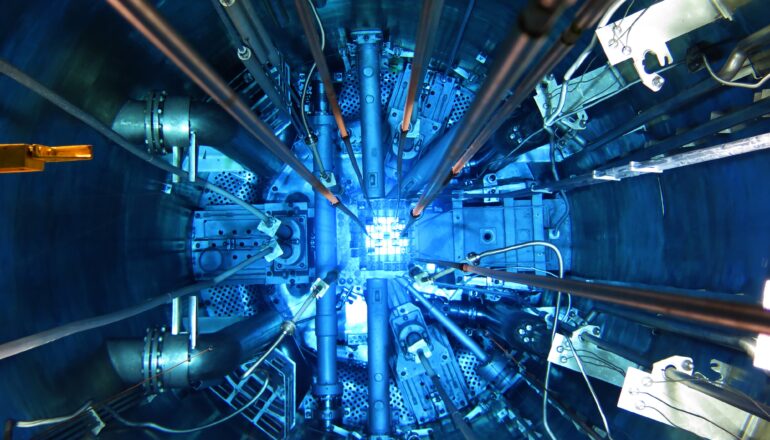TL;DR:
- Researchers from IISc and the University of Wisconsin-Madison develop machine learning models for advanced nuclear reactor materials.
- Advanced reactors promise enhanced efficiency and safety by altering nuclear reactions, but core materials face increased radiation exposure.
- Ferritic-Martensitic (FM) steel offers better radiation resistance, but extensive experimentation is hindered by challenges.
- Collaborative effort produces ML models predicting FM steel strength under radiation, reducing experimental time and costs.
- The use of SHAP algorithm identifies crucial input parameters for FM steel strength prediction.
- These predictive models hold the potential to accelerate material development for advanced nuclear reactors.
Main AI News:
In a groundbreaking collaboration, researchers hailing from the Indian Institute of Science (IISc) and the esteemed University of Wisconsin-Madison in the United States have unveiled pioneering machine learning models. These models are poised to reshape the landscape of nuclear reactor materials design for the next generation.
The IISc underscores that the new wave of advanced nuclear reactors promises remarkable enhancements in both efficiency and safety when compared to the longstanding conventional reactors that have been the industry standard. These advancements are achieved by effecting alterations in either the nature or pace of nuclear reactions within the reactor’s core.
However, this progress comes with a caveat. These modifications could potentially lead to heightened radiation exposure for core materials, such as austenitic stainless steels, originally ill-equipped to endure such demanding conditions. The solution? A special category of steel known as Ferritic-Martensitic (FM) steel, is engineered to withstand the rigors of nuclear radiation with greater resilience.
Yet, the production of FM steels involves a multitude of variations in composition and processing conditions. These distinct FM steel variants exhibit diverse responses to varying levels of radiation exposure and temperatures. Regrettably, only a minute fraction of these steel types have undergone experimental scrutiny. The impediments to comprehensive experimentation in extreme environments are multifaceted, encompassing the scarcity of nuclear testing facilities, exorbitant costs, and substantial safety concerns, as highlighted by IISc.
It is, therefore, imperative to meticulously investigate the ramifications of neutron irradiation on FM steels to pinpoint the most suitable option for a specific irradiation level within a given reactor.
One viable approach entails the utilization of physics-based models. However, these models necessitate copious defect characterization data as input—a resource that is conspicuously lacking in the majority of experiments documented in the scientific literature. Proposing a forward-thinking alternative, the collaborative powerhouse of IISc and the University of Wisconsin-Madison has engineered ingenious machine learning (ML) models.
These transformative models proffer insightful forecasts on the impact of neutron irradiation upon the strength of FM steels. They harness a gamut of input parameters, including composition, processing conditions, and testing variables such as radiation dosage and temperature.
The research team harnessed the potency of an algorithm christened “SHAP” to discern the most pivotal input parameters and variables governing the strength of FM steels under irradiation. Armed with this newfound knowledge, they harnessed four distinct ML algorithms to prognosticate the strength of various FM steel variants subjected to an array of radiation levels and temperature regimes.
In a profound testament to their efficacy, IISc has proclaimed that these predictive models hold the potential to substantially curtail the time and expenses required for conducting experiments under arduous conditions. Moreover, they are poised to expedite the development of materials that are indispensable for the advancement of next-generation nuclear reactors.
Conclusion:
The development of these machine learning models holds great promise for the nuclear reactor materials market. By significantly reducing the time and costs associated with experimentation, they pave the way for faster advancements in next-generation nuclear reactor technology. This innovation will likely drive increased interest and investment in the sector, as it addresses critical safety and efficiency concerns.

